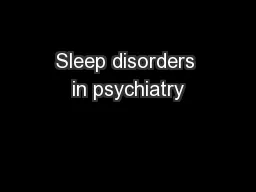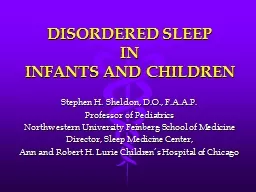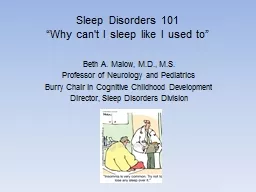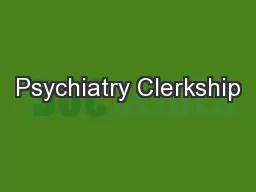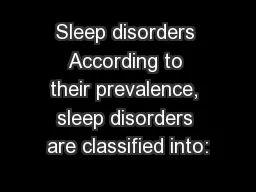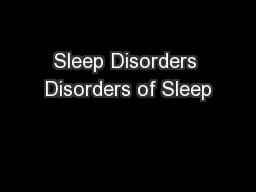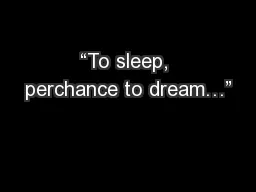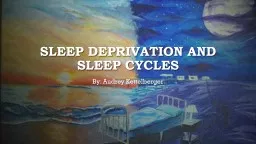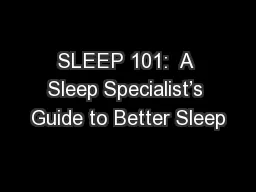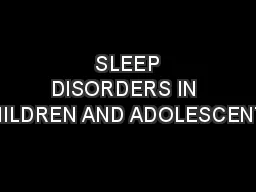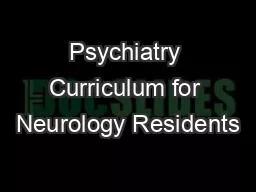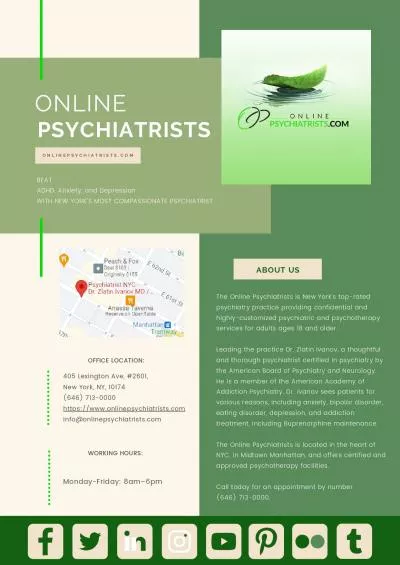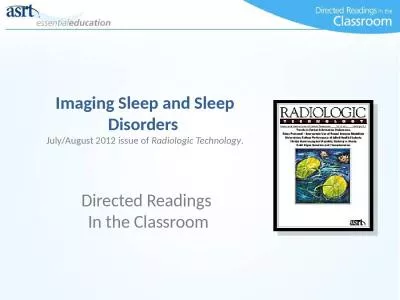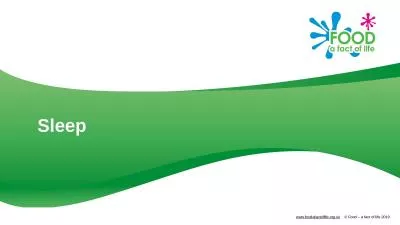PPT-Sleep disorders in psychiatry
Author : sherrill-nordquist | Published Date : 2019-03-13
György Purebl MD PhD Sleep passivity Sleep rest Sleep tranquillity Acitve and intensive biological process Different processes with different functions Sleep
Presentation Embed Code
Download Presentation
Download Presentation The PPT/PDF document "Sleep disorders in psychiatry" is the property of its rightful owner. Permission is granted to download and print the materials on this website for personal, non-commercial use only, and to display it on your personal computer provided you do not modify the materials and that you retain all copyright notices contained in the materials. By downloading content from our website, you accept the terms of this agreement.
Sleep disorders in psychiatry: Transcript
György Purebl MD PhD Sleep passivity Sleep rest Sleep tranquillity Acitve and intensive biological process Different processes with different functions Sleep is vital Sleepphase functions. I have been told th at I hold my breath when I sleep I have high blood pressure My friends and family say that Im grumpy and irritable I wish I had more energy I get morning headaches I often wake up gasping for breath I am overweight I often feel s IN. INFANTS AND CHILDREN. Stephen H. Sheldon, D.O. ., F.A.A.P.. Professor . of Pediatrics. Northwestern University . Feinberg School of Medicine. Director, Sleep Medicine Center,. Ann and Robert H. Lurie Children’s Hospital of Chicago. “Why can't I sleep like I used to” . Beth A. Malow, M.D., M.S.. Professor of Neurology and Pediatrics. Burry Chair in Cognitive Childhood Development. Director, Sleep Disorders Division. Have you met Ruth and John?. 2016-2017. Chelsea Carson, M.D., FAPA. Clerkship Director. chcarson@augusta.edu. Clerkship Orientation Overview. Policies. Objectives. Expectations and clerkship components. Psychiatric interview. Mental status exam. 1- Insomnia (the commonest): difficulty in initiating or maintaining sleep.. 2- Restless Leg Syndrome (RLS) 5-15%:. 3- Obstructive Sleep Apnea (OSA) 4%. 4- Parasomnias.. 5- Narcolepsy. . classification. 58% Adults Snore. 36% Complain of Insomnia. 15% note persistent Excessive Daytime Sleepiness. 3% Unusual Nocturnal Behaviors. 28% Workforce on night or rotating shifts. One in Three Individuals are Dissatisfied with Their Sleep. --Hamlet [William Shakespeare]. States of consciousness. Why do we sleep?. Hypothalamus . regulates sleep. Melatonin: . hormone linked to sleep. Preservation: . dangerous to travel at night—protects you (adaptation). By: Audrey Kettelberger. Brief History of the Study of Sleep. Our fascination with sleep dates all the way back to 450 BC with the Ancient Greeks, although there wasn’t much concrete science behind it until 1929. Joya Paul, MD, MS. NorthShore. University . HealthSystem. Department of Neurology, Sleep Disorders. November 17, 2017. Objectives. Review background on sleep and wake. Answer some of the most frequently asked questions about sleep. Rebecca Cho, M.D.. O B J E C T I V E S. Review of sleep architecture and physiology through life stages. . Exploration of pediatric sleep disorders and comorbidities. Potential consequences of sleep disruption in development. This curriculum developed in collaboration with the Consortium of Neurology Program Directors and the American Association of Directors of Psychiatric Residency Training provides a comprehensive outli The Online Psychiatrists is New York’s top-rated psychiatry practice providing confidential and highly-customized psychiatric and psychotherapy services for adults ages 18 and older.
Leading the practice Dr. Zlatin Ivanov, a thoughtful and thorough psychiatrist certified in psychiatry by the American Board of Psychiatry and Neurology. He is a member of the American Academy of Addiction Psychiatry. Dr. Ivanov sees patients for various reasons, including anxiety, bipolar disorder, eating disorder, depression, and addiction treatment, including Buprenorphine maintenance.
The Online Psychiatrists is located in the heart of NYC, in Midtown Manhattan, and offers certified and approved psychotherapy facilities.
Call online psychiatrists today for an appointment by number (646) 713-0000
Payment: cash, check, credit cards.
Online Psychiatrists
405 Lexington Ave, #2601,
New York, NY, 10174
(646) 713-0000
https://www.onlinepsychiatrists.com
https://onlinepsychiatrists.business.site
E-mail: info@onlinepsychiatrists.com
Google maps: https://goo.gl/maps/8iSs8BpARMdpjrgx7
Nearby Locations:
Lenox Hill | Upper East Side | Midtown East | Upper West Side
10021 | 10022 | 10023 July/August 2012 issue of . Radiologic Technology. .. Directed Readings . In the Classroom. Instructions:. This presentation provides a framework for educators and students to use Directed Reading content published in . need - . every night! . The importance of sleep. A healthy lifestyle includes getting enough quality sleep. In the short-term, lack of sleep can . make you feel irritable and moody and can affect memory and .
Download Document
Here is the link to download the presentation.
"Sleep disorders in psychiatry"The content belongs to its owner. You may download and print it for personal use, without modification, and keep all copyright notices. By downloading, you agree to these terms.
Related Documents

